How to Get Rid of Moles in Your Yard & Garden: 9 Methods That Work
-
Pete Ortiz
- Last updated:
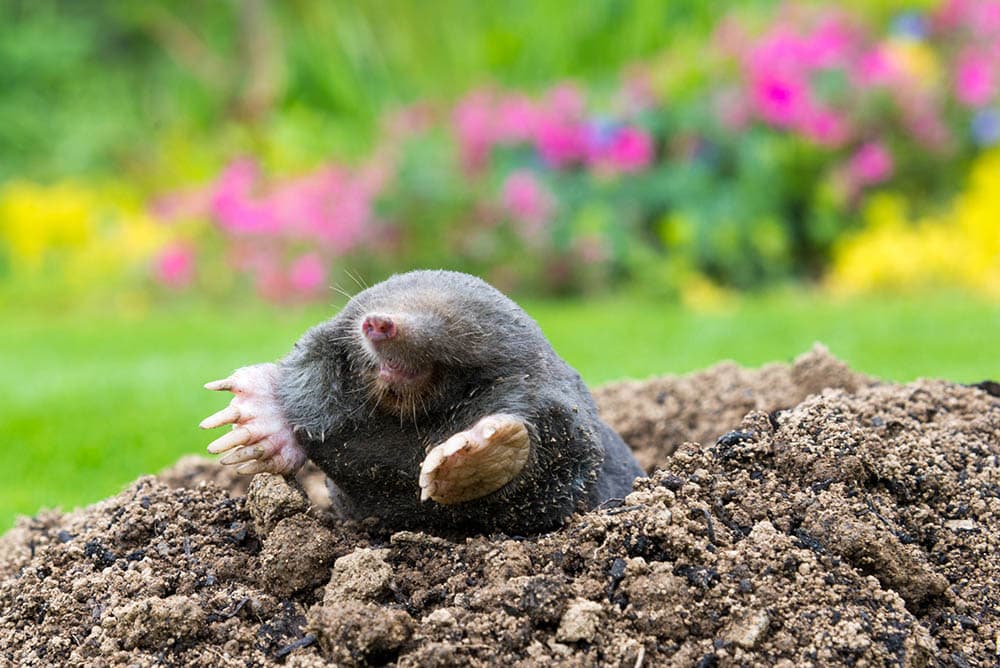
As a gardening enthusiast, nothing is more frustrating than having your priced plants and flowers destroyed by pests and insects. Moles are the biggest headache for farmers and gardeners across America. These shy creatures are infamous for destroying food crops and the aesthetic appeal of your garden.
They construct intricate tunnel networks and mounds for easy movement when looking for food and potential mates. These tunnels damage or kill the plants, trees, and grass in your yard. To reclaim your garden, the only solution is to get rid of the moles. This is easier said than done because these underground dwellers are hard to spot and even trickier to get rid of.
In this article, we have compiled everything you need to know about protecting your garden from these pesky pests. You can implement the most appealing approach or combine different tactics for optimum results.
How Do You Identify Mole Damage in Your Yard or Garden?
Moles are small mammals that live underground. They have tiny front paws and powerful back legs that they use to push dirt out of their tunnels. They also have long hairless tails that are sensitive to vibrations in the ground.
These are also solitary creatures except during the breeding season. They are usually active at night and eat worms, insects, snails, and other small animals they find underground. They inhabit lawns and gardens, causing damage to desirable turf or vegetation. But they are so secretive that it may take a while before you actually see one in action.
Fortunately, you can easily tell that your yard has a mole infestation problem from the presence of dirt mounds, molehills, and dead grass in your yard.
- Molehills: Molehills are mounds of dirt that form when a mole pushes dirt below ground level and piles it up above where it has tunneled through as it searches for worms and insects to eat. These mounds look like small hills with dirt piled around them. They may also resemble ant hills.
- Dead Grass: Moles are burrowing animals, often digging tunnels underneath. They can also cause damage by digging up roots and causing parts of the ground to become unstable. Mole tunnels make it challenging for seeds to take root and grow well. You may see brown patches in your lawn or garden beds that look like they’ve been burned or scorched. These can be areas where moles have been digging tunnels beneath your soil surface.
- Chunks of Dirt: Moles leave behind dirt piles when they dig underground tunnels. Usually, these piles of dirt are near the tunnel entrances.
- Mounds That Are Far Apart: Moles create large and round mounds with a small hole in the middle. This is where they live and raise their young ones. Several mounds on the surface of your lawn or garden is an indication of a mole infestation.
The 9 Ways to Get Rid of Moles in Your Yard and Garden
If you notice mole infestation in your garden, get rid of them as soon as possible. Let’s look at some of the most common methods of removing moles from your garden.
1. Remove Their Food Source
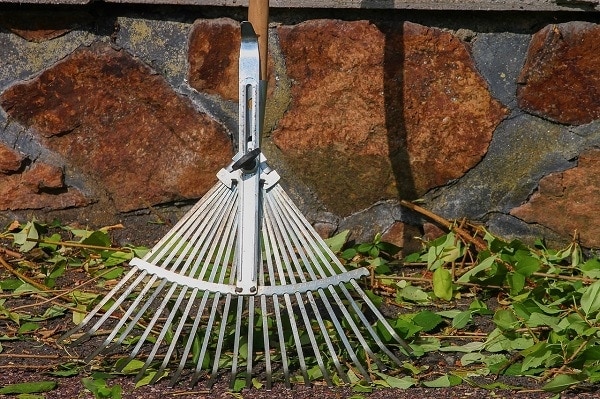
Moles eat earthworms, grubs, insects, and other invertebrates in loose soil. If you reduce these insects in your yard or garden, it will mitigate the number of moles as well. If underground insect larvae live in the soil, apply beneficial nematodes. They will get rid of these insects and stop the mole infestation as there will be less food available.
Also, remove any loose mulch or rotting vegetation and rake leaves off lawns every fall. This way, there won’t be a place for grubs and worms to hide all winter. That’s where moles will look first when they emerge in spring for their next meal!
2. Keep Your Lawn or Yard Tidy
Moles like to hide in dirt. It is only reasonable that you get rid of such hiding places by keeping your lawn tidy. Remove leaves, sticks, and other debris that could attract them. Also, keep the grass short because long grass provides good cover for moles. Just ensure that there is less loose dirt available for them to dig through.
If weeds are present on your lawn, they will also attract more insects. Insects are a favorite food source for moles. Also, if you have bushes or other plants near the edge of your yard, trim these back, so there won’t be any branches hanging over into the center of the yard.
3. Create an Artificial Drought
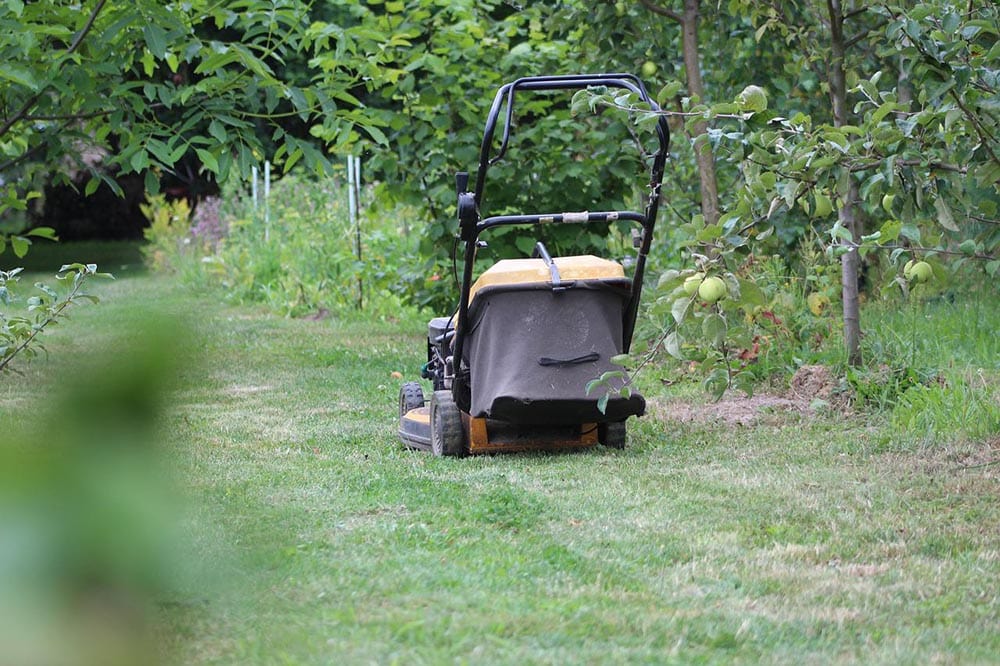
In the wild, moles have little tolerance for dry conditions. They depend on moisture in their tunnels for survival. It means that if their tunnels become too dry, they will leave them and find another home where they can find more moisture.
Thus, an ideal way to chase away these creatures is by creating an artificial drought within their habitat. When the garden or yard dries, it also mitigates the survival of earthworms, a delicacy for the moles. So, this automatically discourages them from making your garden a habitat. Don’t forget that your garden only needs an inch of water every week to keep it healthy.
The best thing about this method is that it’s natural and effective, but it’s not a long-term solution because you cannot prevent rain. Besides, you will eventually have to water your grass.
4. Use Sonic Spikes
Moles prefer quiet habitats. So, creating noise can chase them away. One way of doing this is using sonic spikes. A sonic spike is a plastic tube that emits ultrasonic noise. The noise from the sonic spike is too high for humans to hear, but it irritates moles. So, they’ll leave your yard and garden to find a quieter place to live.
You can use sonic spikes alone or along with other methods of repelling moles. These devices are inexpensive and easy to install. The only downside is that the moles may adapt to the sounds emitted.
Using Barriers
Barriers are simple techniques that will block the moles from entering your yard. Some barriers include:
5. Digging a Trench
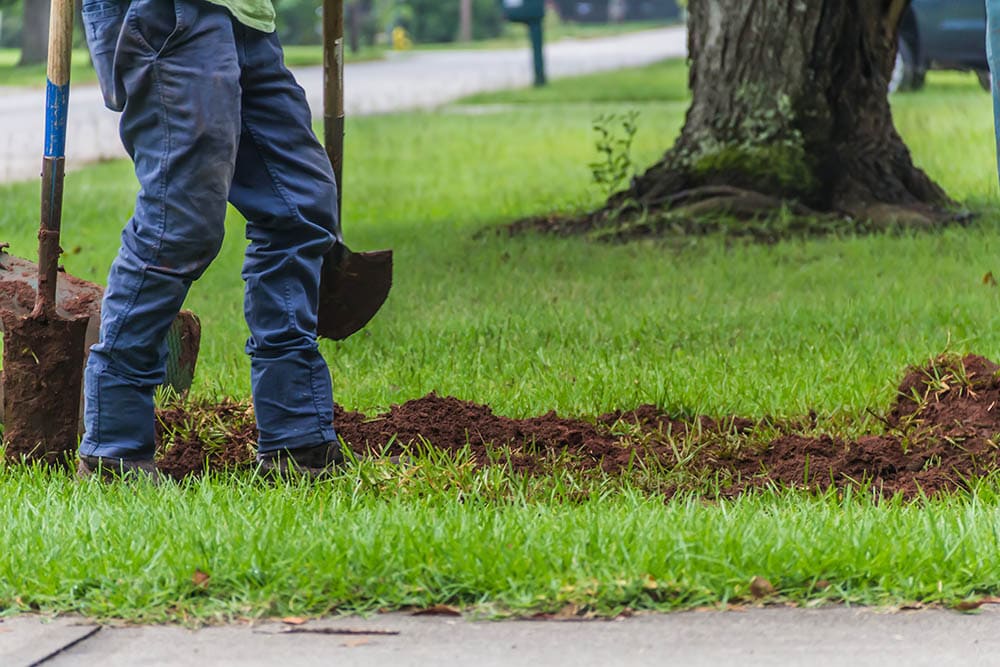
Another effective way to get rid of moles is to dig a trench around the garden or yard. The ditch should be about two feet deep and six inches wide.
Fill the trench with rocks or use wire mesh to line it. This way, it’ll be challenging for moles to dig through. Although this technique is time-consuming, it is quite effective and long-term.
Digging a trench is a long-term solution against moles, but on the flip side, it is quite time consuming and needs muscle power to build a trench all around.
6. Using Plants as a Barrier
Some plants that can bar moles from entering a yard include marigolds, daffodils, fritillaries, and alliums. You can also grow thorny plants with deep roots around the perimeter of your yard or garden bed. These include roses, holly bushes, yews, and boxwood shrubs. This method works best if applied to areas where moles are known to enter from.
These plants will not only keep the moles away, but they will also add to the aesthetics of your garden.
Enticing Foods and Trap Baits
You can use some foods to chase away moles. The best types of food to use are castor oil and baits that resemble the moles’ natural diet such as earthworms, insects, and grubs. You can buy them at most pet stores or online.
7. Castor Oil

Rather than killing moles, castor oil causes digestive discomfort. This way, your yard or garden becomes inhabitable for the moles.
Simply spray the castor oil on grass and weeds. You can prepare castor oil using one part of dish soap and three parts castor oil. Then, mix four tablespoons of this solution in water. Soak the mole entrances and tunnels in your yard using this solution.
If you have kids around, don’t worry. Castor oil is safe. You must apply castor oil frequently to get rid of moles.
8. Poison Baits
The best way to get rid of moles is through poison bait traps. You can find these baits at your local hardware store. Some baits look like grubs and earthworms. When moles eat these baited grubs and earthworms, they die after 12 to 24 hours. Besides, you don’t need to dispose of their bodies as most of them die underground.
Some poison baits are safe for pets, but others aren’t. Some may be harmful if ingested by humans and animals. So, contact your veterinarian before using them around your home or yard.
9. Trapping
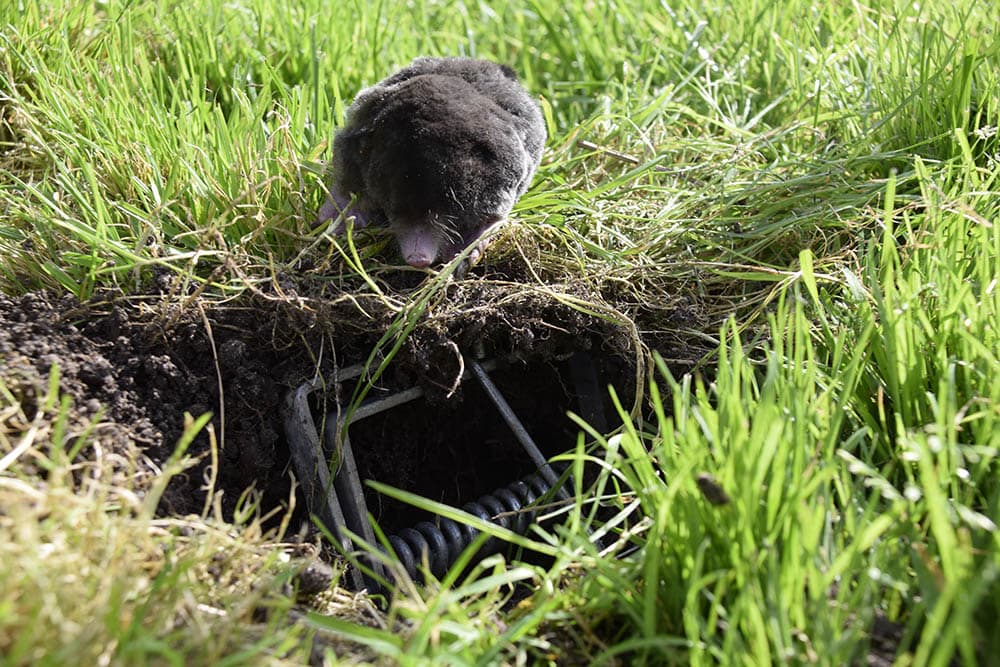
Trapping is perhaps the oldest method of controlling moles. This method has been used since time immemorial. Moles cannot smell very well, so they rely on their sense of touch to find food sources and avoid danger.
You can use this weakness against them. Put traps along the walls of their tunnels or near feeding areas. The best time to place traps is after dark when moles are active.
The trap should have a metal trigger bar to disengage when the mole pushes against it with its nose or forelimbs. Most traps come with instructions on how to set them well. You may need many traps if there are many active tunnels in your yard or garden.
Traps are efficient and fast, but they’re not humane and you will have to dispose of the dead moles. Also, you may have to wait for a while before the moles get caught in the trap.
When to Call an Exterminator
Perhaps you don’t prefer doing all this work to chase away moles in your garden or yard. If so, it’s time to call the exterminator. So, you don’t have to worry about doing it yourself or harming other animals during the process.
Contact an exterminator as soon as possible if you have a problem with moles. Waiting too long can cause more damage to your yard or garden.
What Attracts Moles to Your Yard or Garden?
Now you know how to remove moles from your garden or yard. But what attracts them in the first place?
Moles don’t just appear out of nowhere. There’s always a reason why they choose one location over another.
- Many Insects: Insects are the primary food source for moles. Besides, they eat almost anything small enough including earthworms, slugs, spiders, grubs, and even mice. If you have a large insect population in your yard or garden, they will attract moles.
- Cool Temperatures: Moles prefer cool temperatures. They will burrow through the soil during the day and come up for air at night. But they’re neither nocturnal nor blind. They also prefer cool and moist soil as it makes it easier to dig through the ground. Cool soil also helps moles control their temperature.
- Landscaping Elements: Moles are attracted to landscaping elements such as rocks and raised flower beds. These elements provide them with shelter, food, and water. They will also nest in areas with loose soil or mulch because it’s easier to dig through here. They may also follow paths, fence rows, and other borders.
Conclusion
Moles can be quite a bother when they establish a home in your yard. They can tear up the grass or attack your plants. So, get out there and get rid of those pesky critters. You can keep them from returning by taking preventative measures and ridding your yard of them. Rest assured that most of these options are yard-friendly. They won’t cause a lot of damage.
But, at least you now know there’s something you can do about it. Try some of these methods and see what works best for you. Always be careful with any chemicals you use. Make sure that none of your other plants or animals will be harmed.
- How Do You Identify Mole Damage In Your Yard Or Garden?
- Remove Moles Food Source to starve them
- Keep your Lawn or Yard Tidy
- Create an Artificial Drought to get rid of moles
- Using Sonic Spikes
- Digging a Trench
- Use Plants as a Barrier
- Using Castor Oil
- Baiting
- Trapping Moles
- What Attracts Moles To Your Yard Or Garden?
- ATSHQ
- ALLOTMENT-GARDEN
- MJBPEST CONTROL
Featured Image Credit: kubais, Shutterstock
Contents



